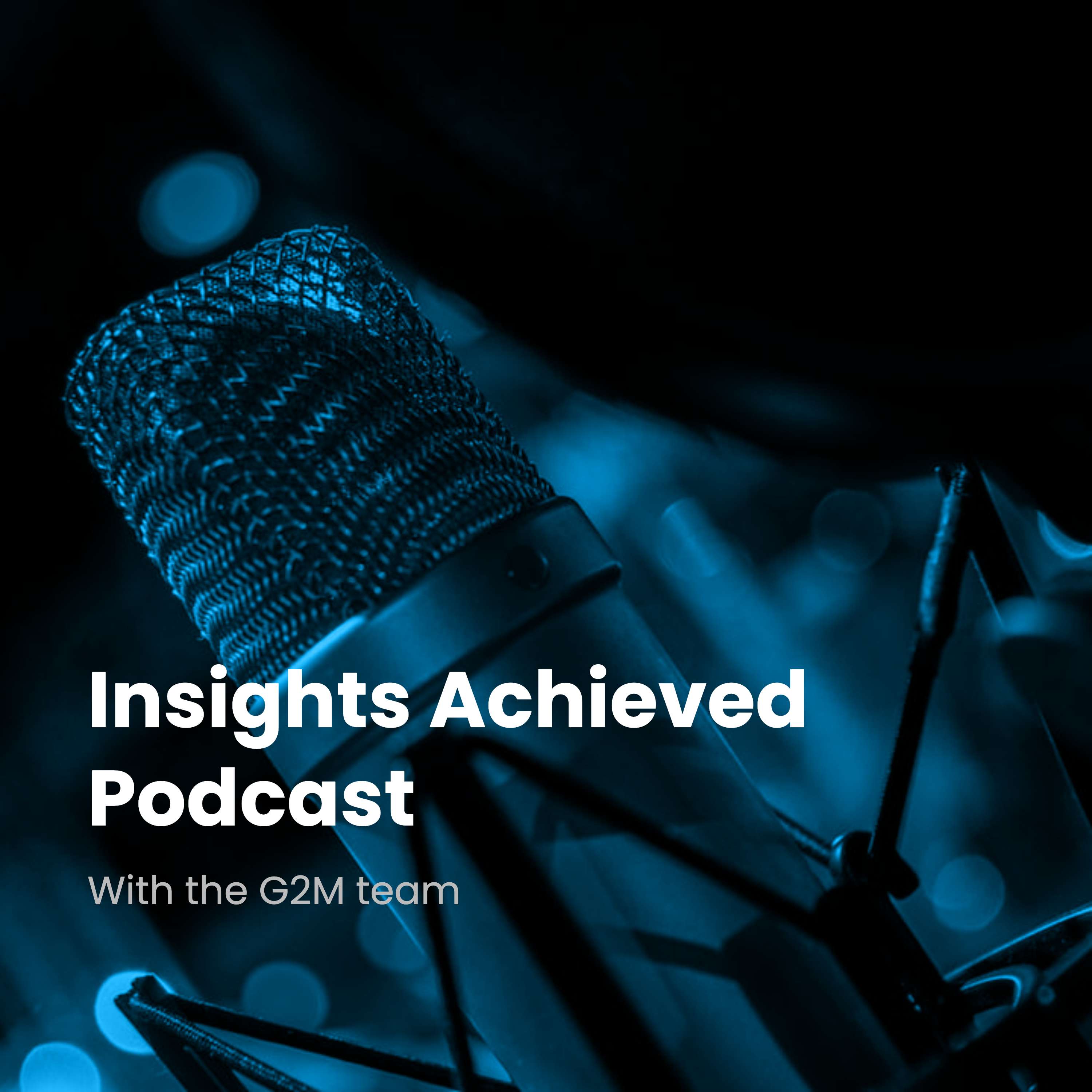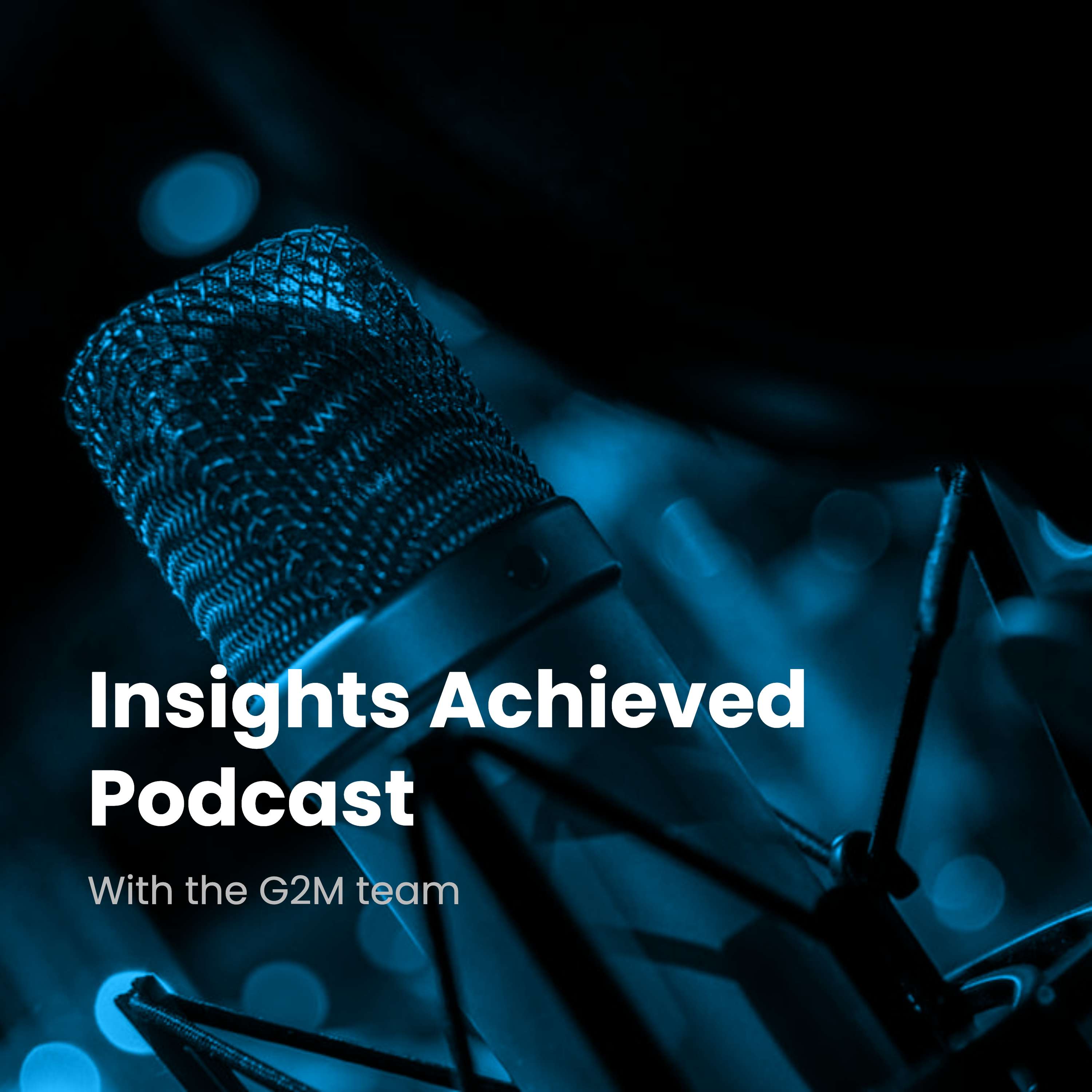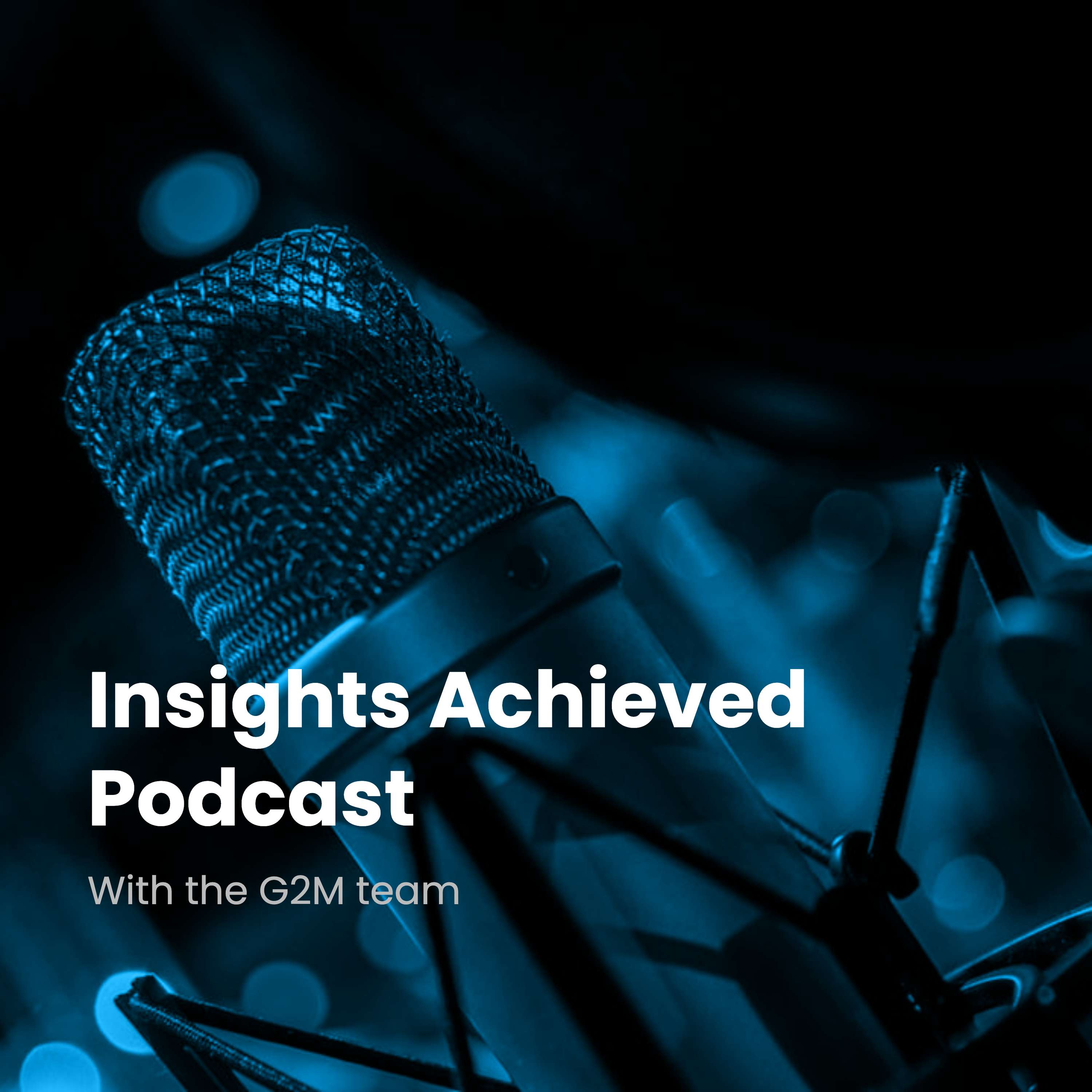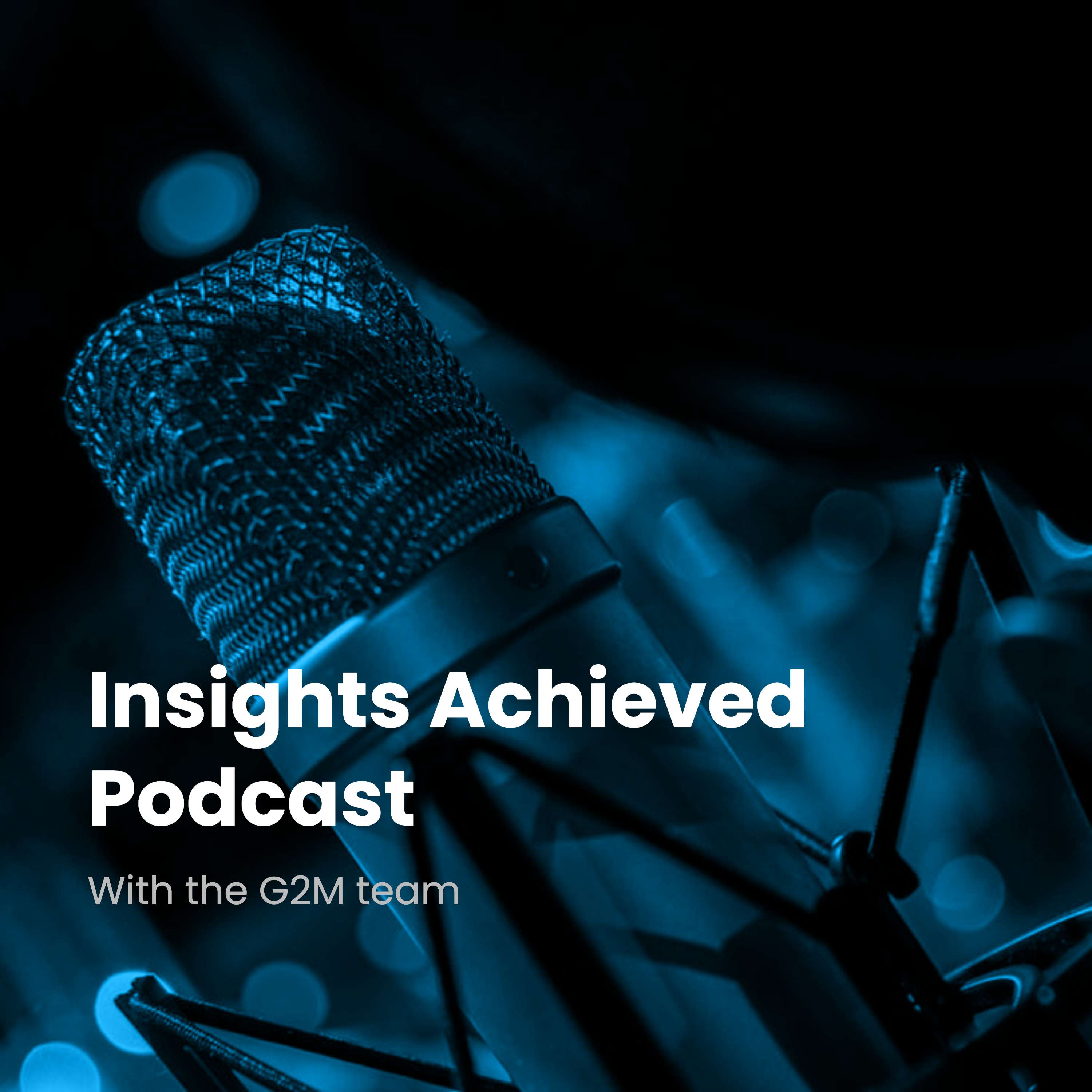Episode Transcript
[00:00:00] Speaker A: All right, so everyone's making super bowl predictions right now, Right? We're going to look at it a little differently today.
[00:00:04] Speaker B: Okay.
[00:00:05] Speaker A: We're going to deep dive into how machine learning is being used to predict super bowl winners.
[00:00:10] Speaker B: Sounds interesting.
[00:00:11] Speaker A: And how those same concepts can be applied to sales and marketing.
[00:00:15] Speaker B: I like it.
[00:00:15] Speaker A: So we've got two articles from G2M Insights that we're going to look at.
[00:00:19] Speaker B: Okay.
[00:00:20] Speaker A: The first one's called Predicting the Super Bowl Winner with Machine Learning.
[00:00:24] Speaker B: Okay.
[00:00:24] Speaker A: And then we'll look at leveraging business analytics lessons from the NFL for business strategy.
[00:00:31] Speaker B: Okay.
[00:00:32] Speaker A: So we'll start with a fun one.
[00:00:33] Speaker B: Yeah, let's have some fun.
[00:00:34] Speaker A: So this company, G2M Insights, built this model to predict super bowl winners.
[00:00:41] Speaker B: Okay.
[00:00:42] Speaker A: And they use data going all the way back to 1992.
[00:00:47] Speaker B: Wow, that's a lot of data.
[00:00:50] Speaker A: Yeah, I mean, they were really trying to see, like, what factors actually contribute to a team's super bowl chances.
[00:00:57] Speaker B: I mean, there's so many variables in football. You know, you've got the players, the coaches, injuries.
[00:01:03] Speaker A: Yeah.
[00:01:03] Speaker B: The coaching, the weather, all sorts of crazy stuff.
[00:01:07] Speaker A: It seems so random sometimes.
[00:01:08] Speaker B: But that does seem random sometimes. For sure.
[00:01:10] Speaker A: They found some pretty good predictors.
[00:01:12] Speaker B: Okay, cool.
[00:01:14] Speaker A: So one of the first things they considered was wins.
[00:01:19] Speaker B: Yeah, that makes sense.
[00:01:20] Speaker A: You know, like, the more wins a team has during the regular season, obviously.
[00:01:24] Speaker B: The better their chances of even making it to the playoffs.
[00:01:28] Speaker A: Exactly.
[00:01:29] Speaker B: Let alone winning the whole thing.
[00:01:30] Speaker A: Right. So that's like an obvious one.
[00:01:32] Speaker B: Yeah.
[00:01:32] Speaker A: But then they also realized, okay, like, historical data is important, too.
[00:01:36] Speaker B: Oh, yeah, for sure.
[00:01:37] Speaker A: So they incorporated data from the previous season.
[00:01:40] Speaker B: Interesting.
[00:01:41] Speaker A: Like, you know, if a team was really good last year, chances are.
[00:01:45] Speaker B: Yeah.
[00:01:45] Speaker A: They might still be pretty good this year.
[00:01:47] Speaker B: Yeah. Momentum, you know.
[00:01:49] Speaker A: Exactly.
[00:01:49] Speaker B: Team chemistry, all that stuff.
[00:01:50] Speaker A: Yeah, totally.
[00:01:51] Speaker B: Yeah.
[00:01:52] Speaker A: So I'm curious.
[00:01:53] Speaker B: Yeah.
[00:01:53] Speaker A: What about all the other stats, though?
[00:01:55] Speaker B: Yeah, there's a ton of them in football.
[00:01:56] Speaker A: Yes. I mean, football's a game of numbers.
[00:01:58] Speaker B: It is for sure.
[00:01:59] Speaker A: Right.
[00:01:59] Speaker B: Yeah.
[00:02:00] Speaker A: So they had to figure out how to use all those numbers, too.
[00:02:02] Speaker B: Yeah.
[00:02:03] Speaker A: So G2M insights, okay. They looked at first downs per game.
[00:02:06] Speaker B: Okay.
[00:02:07] Speaker A: As one of the key metrics for.
[00:02:09] Speaker B: Those who don't know a lot about football. Can you explain what a first down is?
[00:02:12] Speaker A: So basically, a first down means the. The team has gained 10 yards.
[00:02:17] Speaker B: Okay.
[00:02:18] Speaker A: And then they get another set of attempts to move the ball down the field.
[00:02:21] Speaker B: Okay. So it's like a measure of offensive success.
[00:02:24] Speaker A: Exactly. Like, the more first downs you're getting, the more likely you are to Score makes sense, right?
[00:02:30] Speaker B: Yeah.
[00:02:30] Speaker A: So. So they took all that.
[00:02:32] Speaker B: But here's the thing. They didn't just, like, plug all those raw numbers into their model. They standardized the data.
[00:02:40] Speaker A: Okay.
[00:02:41] Speaker B: Using something called Z scores.
[00:02:43] Speaker A: Z scores, huh? Yeah.
[00:02:44] Speaker B: Have you ever heard of that?
[00:02:45] Speaker A: I have, actually.
[00:02:46] Speaker B: Okay, so explain that to me. Yeah. So like, imagine, like, why is that so important for their model?
[00:02:53] Speaker A: So, like, imagine a team scores like 30 touchdowns in a season.
[00:02:56] Speaker B: Okay.
[00:02:56] Speaker A: And another team scores 25.
[00:02:58] Speaker B: Okay.
[00:02:59] Speaker A: So, like, at first glance, the team with 30 looks better, right?
[00:03:03] Speaker B: Yeah, of course.
[00:03:04] Speaker A: But what if, like, the average number of touchdowns that season was only 20? Then suddenly the team with 25 looks a lot better.
[00:03:10] Speaker B: Oh, interesting.
[00:03:11] Speaker A: Right.
[00:03:12] Speaker B: Okay.
[00:03:12] Speaker A: So that's where Z scores come in.
[00:03:14] Speaker B: So it's not just about the raw numbers. It's about how they compare to the average.
[00:03:18] Speaker A: Exactly.
[00:03:18] Speaker B: Gotcha.
[00:03:19] Speaker A: Yeah. It's like relative performance. Okay. That's what Z scores help us understand.
[00:03:23] Speaker B: So it's like, you know, you've got to compare apples to apples.
[00:03:26] Speaker A: Exactly.
[00:03:27] Speaker B: Okay. Yeah, that makes sense. Cool. All right, so we've crunched all this data.
[00:03:33] Speaker A: Yeah.
[00:03:33] Speaker B: They've standardized everything.
[00:03:35] Speaker A: What did they find?
[00:03:36] Speaker B: What did their model actually reveal?
[00:03:38] Speaker A: What were the big predictors?
[00:03:39] Speaker B: Yeah. What were like, the top predictors of super bowl success? Success.
[00:03:43] Speaker A: I'm on the edge of my seat.
[00:03:44] Speaker B: All right, so as we might have.
[00:03:46] Speaker A: Guessed, the number of wins during the regular season was a top predictor.
[00:03:51] Speaker B: Makes sense.
[00:03:51] Speaker A: But the model also highlighted that first downs per game and key stats from the previous season.
[00:03:59] Speaker B: Interesting.
[00:04:00] Speaker A: Played significant roles as well.
[00:04:02] Speaker B: So, like, consistency and past performance.
[00:04:05] Speaker A: Yeah.
[00:04:06] Speaker B: Are key.
[00:04:06] Speaker A: Totally.
[00:04:07] Speaker B: Even in a sport as unpredictable as football.
[00:04:09] Speaker A: Yeah. I mean, that's pretty amazing.
[00:04:11] Speaker B: It is pretty wild.
[00:04:12] Speaker A: It's not a crystal ball or anything.
[00:04:13] Speaker B: Right.
[00:04:14] Speaker A: But.
[00:04:14] Speaker B: But still, it's pretty cool.
[00:04:15] Speaker A: Yeah. I'm curious how accurate it was.
[00:04:17] Speaker B: Yeah. So they found that their model correctly predicted the Super bowl winner 29% of the time.
[00:04:25] Speaker A: Wow.
[00:04:26] Speaker B: Which that's actually when you think about all the randomness of the playoffs. Yeah, it's pretty good.
[00:04:32] Speaker A: It is. You know, that's impressive.
[00:04:34] Speaker B: Yeah. So it's not perfect.
[00:04:35] Speaker A: Yeah.
[00:04:36] Speaker B: But it's pretty remarkable.
[00:04:37] Speaker A: Yeah, for sure.
[00:04:39] Speaker B: And it makes you think, like.
[00:04:39] Speaker A: Yeah.
[00:04:40] Speaker B: Imagine if we could apply this to business.
[00:04:43] Speaker A: Right.
[00:04:44] Speaker B: Like, imagine if you could predict which.
[00:04:46] Speaker A: Leads are most likely to convert or.
[00:04:49] Speaker B: Which marketing campaigns are going to be the most successful.
[00:04:52] Speaker A: Exactly. So that's something we can explore a little bit more when we look at their second article, leveraging Business analytics.
[00:04:59] Speaker B: Okay, cool.
[00:04:59] Speaker A: But before we move on to the business side of Things.
[00:05:01] Speaker B: Okay.
[00:05:02] Speaker A: I got to ask.
[00:05:03] Speaker B: Yeah.
[00:05:03] Speaker A: Did G2M insights.
[00:05:05] Speaker B: Yeah.
[00:05:06] Speaker A: Make any predictions for this year's Super Bowl?
[00:05:08] Speaker B: They did.
[00:05:09] Speaker A: Okay.
[00:05:10] Speaker B: They did.
[00:05:10] Speaker A: Who are they betting on?
[00:05:12] Speaker B: I'll tell you, but first I want to hear your prediction.
[00:05:14] Speaker A: Okay.
[00:05:15] Speaker B: Based on everything we've talked about.
[00:05:16] Speaker A: Oh, that's tough.
[00:05:17] Speaker B: Yeah.
[00:05:18] Speaker A: All right, so based on their emphasis on wins and historical performance and offensive efficiency, I'm going to go with.
[00:05:27] Speaker B: Okay.
[00:05:28] Speaker A: Actually, you know what? I'm going to save my prediction for later. I'm dying to hear who the model picked.
[00:05:32] Speaker B: Okay. I won't keep you in suspense any longer. Okay. So their model predicts the top contenders for Super Bowl L8 are. The Kansas City Chiefs.
[00:05:42] Speaker A: Oh, wow.
[00:05:42] Speaker B: Philadelphia Eagles.
[00:05:43] Speaker A: Okay.
[00:05:44] Speaker B: The Buffalo Bills.
[00:05:45] Speaker A: All right.
[00:05:46] Speaker B: San Francisco 49ers.
[00:05:47] Speaker A: Okay.
[00:05:48] Speaker B: And the Cincinnati Bengals.
[00:05:50] Speaker A: Wow. That's a pretty impressive lineup.
[00:05:52] Speaker B: Yeah.
[00:05:53] Speaker A: A lot of familiar faces from recent playoffs.
[00:05:55] Speaker B: Yeah. A lot of those teams.
[00:05:57] Speaker A: Which makes sense.
[00:05:58] Speaker B: I've been there before.
[00:05:59] Speaker A: Right. Given their emphasis on historical performance.
[00:06:02] Speaker B: Exactly.
[00:06:02] Speaker A: Okay.
[00:06:03] Speaker B: Yeah.
[00:06:03] Speaker A: I'm going to go out on a limb here.
[00:06:05] Speaker B: Okay.
[00:06:05] Speaker A: And say I think the Buffalo Bills have a real shot this year. They've been so close. Yeah.
[00:06:12] Speaker B: They've been knocking on the door the.
[00:06:14] Speaker A: Past few seasons and their offense is explosive.
[00:06:18] Speaker B: Oh, yeah. Josh Allen's a beast.
[00:06:20] Speaker A: Right.
[00:06:20] Speaker B: Yeah.
[00:06:21] Speaker A: So they're definitely a strong contender.
[00:06:22] Speaker B: Okay.
[00:06:23] Speaker A: Yeah.
[00:06:23] Speaker B: All right. So we've had a lot of fun talking about super bowl predictions.
[00:06:28] Speaker A: Super bowl is always fun. It's a good time.
[00:06:30] Speaker B: But let's shift gears for a minute. Minute. And think about how these data driven approaches can be applied to growing a business.
[00:06:40] Speaker A: That's the real question, right?
[00:06:41] Speaker B: Yeah, exactly.
[00:06:42] Speaker A: Like, how do we take this stuff?
[00:06:43] Speaker B: Like we were saying.
[00:06:44] Speaker A: Yeah.
[00:06:45] Speaker B: If we can predict the super bowl and apply it to business, can we predict sales?
[00:06:50] Speaker A: Can we predict marketing campaigns? All that good stuff.
[00:06:53] Speaker B: So the article that we're going to look at now is called Leveraging Business Analytics Lessons from the NFL for Business Strategy.
[00:07:05] Speaker A: I like it.
[00:07:05] Speaker B: So what are some of the key takeaways?
[00:07:07] Speaker A: So one of the biggest things they talk about in this article is building a data driven culture across all teams, not just the analytics department.
[00:07:17] Speaker B: So it's not just about having a few data analysts.
[00:07:20] Speaker A: Yeah. You can't just have, like, working in a silo, a little team of data nerds off in the corner.
[00:07:27] Speaker B: Everyone needs to be involved.
[00:07:28] Speaker A: Everyone needs to buy in to the data and use it to make decisions. Yeah. Because like, in football, it's not just the coach.
[00:07:36] Speaker B: Right.
[00:07:36] Speaker A: Who's making decisions.
[00:07:37] Speaker B: Yep. The players, the coordinators you know, everyone's got to be.
[00:07:42] Speaker A: Everyone's got to be on the same page.
[00:07:43] Speaker B: On the same page. Using the data to make the best calls.
[00:07:48] Speaker A: So that's like lesson number one. That's lesson number Build the data driven culture.
[00:07:52] Speaker B: Data driven culture across the whole organization.
[00:07:55] Speaker A: Let's lesson number two.
[00:07:56] Speaker B: Lesson number two is all about finding that balance between analytics. Analytics and human expertise.
[00:08:03] Speaker A: Okay. So, yeah. You don't want to just rely on the numbers.
[00:08:06] Speaker B: Right. Data can be super valuable.
[00:08:08] Speaker A: Yeah.
[00:08:08] Speaker B: But you also need, you need that.
[00:08:12] Speaker A: Human intuition, thrill of feeling the gut.
[00:08:14] Speaker B: Right.
[00:08:15] Speaker A: So it's like, it's like in football.
[00:08:16] Speaker B: In football. Yeah.
[00:08:18] Speaker A: You know, you don't want to just.
[00:08:19] Speaker B: You can't just look at the stuff.
[00:08:20] Speaker A: Rely on the analytics.
[00:08:21] Speaker B: Yeah.
[00:08:22] Speaker A: To make every play call.
[00:08:24] Speaker B: You got to trust. You got to trust the coach. The coach, the quarterback's instincts.
[00:08:29] Speaker A: Yeah.
[00:08:29] Speaker B: All that stuff.
[00:08:30] Speaker A: That's a good point.
[00:08:30] Speaker B: Yeah. So. So it's about finding that sweet spot.
[00:08:34] Speaker A: Finding that sweet spot where data.
[00:08:36] Speaker B: Insights.
[00:08:37] Speaker A: Yeah.
[00:08:37] Speaker B: Complement.
[00:08:38] Speaker A: Complement and enhance human expertise.
[00:08:40] Speaker B: Okay, I like that.
[00:08:42] Speaker A: All right, what else?
[00:08:42] Speaker B: So lesson number three is about focusing on insights.
[00:08:47] Speaker A: Okay.
[00:08:47] Speaker B: That lead to action.
[00:08:49] Speaker A: Okay.
[00:08:49] Speaker B: And improvement.
[00:08:50] Speaker A: So it's not just about gathering data.
[00:08:52] Speaker B: You got to do something with it.
[00:08:53] Speaker A: You got to make it actionable.
[00:08:55] Speaker B: Actionable insights. That's what we're looking for.
[00:08:58] Speaker A: I like that.
[00:08:58] Speaker B: Yeah.
[00:08:59] Speaker A: All right, so you've got to have a plan.
[00:09:01] Speaker B: Got to have a plan.
[00:09:02] Speaker A: You got to know.
[00:09:03] Speaker B: Yeah.
[00:09:03] Speaker A: What you're going to do with the data.
[00:09:04] Speaker B: What are you going to do with.
[00:09:05] Speaker A: It before you even collect it.
[00:09:07] Speaker B: Yeah. You don't want to just be swimming in data and not knowing what to do.
[00:09:11] Speaker A: Yeah. Just drowning in.
[00:09:12] Speaker B: Drowning in data.
[00:09:13] Speaker A: Yeah. That's a good way to put it. Yeah. All right, what's the last lesson?
[00:09:16] Speaker B: All right, so lesson number four.
[00:09:18] Speaker A: Okay.
[00:09:18] Speaker B: Is all about real time analytics.
[00:09:22] Speaker A: Real time.
[00:09:23] Speaker B: Real time.
[00:09:23] Speaker A: Okay.
[00:09:24] Speaker B: So just like NFL teams use real time data.
[00:09:27] Speaker A: Okay.
[00:09:28] Speaker B: To adjust their strategies during a game.
[00:09:30] Speaker A: So like if they see something's not working right.
[00:09:32] Speaker B: They got to make adjustments.
[00:09:33] Speaker A: We got to change it up.
[00:09:34] Speaker B: Got to be agile.
[00:09:35] Speaker A: Okay.
[00:09:36] Speaker B: Businesses can benefit. So it's like from having access to up to the minute information.
[00:09:41] Speaker A: Like marketers.
[00:09:41] Speaker B: Yeah.
[00:09:42] Speaker A: Who are running campaigns.
[00:09:43] Speaker B: Exactly.
[00:09:44] Speaker A: See how things are performing, what's working, what's not working. Real time.
[00:09:47] Speaker B: And make changes, adjust on the fly in real time.
[00:09:50] Speaker A: Yeah. Be responsive.
[00:09:51] Speaker B: Okay.
[00:09:52] Speaker A: To the market.
[00:09:52] Speaker B: So it's all about being. It's all about agile and adaptable.
[00:09:55] Speaker A: Agility and adaptability.
[00:09:57] Speaker B: In today's fast paced.
[00:09:59] Speaker A: Yeah. The market Moves so fast these days. You gotta be able to keep up.
[00:10:03] Speaker B: Right.
[00:10:04] Speaker A: You snooze, you lose.
[00:10:06] Speaker B: Okay. I like it.
[00:10:08] Speaker A: Yeah. So real time analytics, that's lesson number four. It's all about bringing that same level of.
[00:10:13] Speaker B: It is strategic thinking.
[00:10:15] Speaker A: Bringing that strategic thinking and data driven decision making, data driven mindset that we.
[00:10:20] Speaker B: See in the NFL to the world of business.
[00:10:23] Speaker A: It's all connected.
[00:10:24] Speaker B: Yeah. You know, it's really interesting to see how these seemingly disparate worlds of sports and business and business can actually share.
[00:10:33] Speaker A: Yeah.
[00:10:34] Speaker B: Similar principles and approaches.
[00:10:36] Speaker A: It's all about.
[00:10:37] Speaker B: So it's not just about the numbers themselves.
[00:10:39] Speaker A: Not just about the numbers.
[00:10:40] Speaker B: It's about.
[00:10:41] Speaker A: It's about the insights. The insights that we get from them.
[00:10:44] Speaker B: Yeah.
[00:10:45] Speaker A: And the actions that we take.
[00:10:47] Speaker B: The actions we take based on those insights.
[00:10:49] Speaker A: Based on those insights. That's key.
[00:10:52] Speaker B: Okay. So we've covered a lot of ground today from super bowl prediction. Super bowl prediction, data driven business strategies.
[00:11:01] Speaker A: Business strategy. Seems like whether you're a football coach.
[00:11:05] Speaker B: Yeah.
[00:11:06] Speaker A: Or a marketing executive or a CEO, the ability to leverage data. Effectively. Leverage data can be a game changer.
[00:11:14] Speaker B: It's a game changer.
[00:11:15] Speaker A: It's not just a nice to have anymore.
[00:11:17] Speaker B: It's a must have.
[00:11:18] Speaker A: It's a must have.
[00:11:18] Speaker B: Yeah. If you want to stay competitive, you.
[00:11:21] Speaker A: Got to be using data.
[00:11:22] Speaker B: You got to be using data to make decisions, to inform your decisions.
[00:11:25] Speaker A: Okay.
[00:11:25] Speaker B: Yeah.
[00:11:26] Speaker A: And I think as we continue to generate more data, more data than ever, and develop more sophisticated, more sophisticated tools, analytical tools, your future is bright.
[00:11:36] Speaker B: The possibilities for data analytics, for leveraging data.
[00:11:39] Speaker A: Yeah.
[00:11:40] Speaker B: Are only going to continue to expand.
[00:11:42] Speaker A: It's an exciting time.
[00:11:43] Speaker B: Yeah. It's an exciting time to be in the data world. To be in the world of data.
[00:11:46] Speaker A: That's for sure.
[00:11:47] Speaker B: You know, as we wrap up this deep dive into machine learning and super bowl predictions, something keeps coming back to me.
[00:11:54] Speaker A: Oh, yeah? What's that?
[00:11:55] Speaker B: Those Z scores.
[00:11:57] Speaker A: Oh, yeah.
[00:11:58] Speaker B: Like, that was a pretty crucial step.
[00:12:00] Speaker A: In building their prediction model.
[00:12:02] Speaker B: It was essential.
[00:12:03] Speaker A: Why don't we explain that one more time?
[00:12:04] Speaker B: Yeah. For sure.
[00:12:05] Speaker A: For our listeners, team performance.
[00:12:07] Speaker B: Yeah.
[00:12:08] Speaker A: Can fluctuate from one season to the next, right?
[00:12:10] Speaker B: Oh, totally. Some years the league is just more high scoring. Exactly. Or defenses are dominant or whatever it is.
[00:12:17] Speaker A: Yeah. So using raw data without any context.
[00:12:20] Speaker B: Right.
[00:12:21] Speaker A: Wouldn't give you an accurate picture of a team's true strength.
[00:12:25] Speaker B: So they had to standardize everything.
[00:12:27] Speaker A: Exactly.
[00:12:28] Speaker B: So instead of just looking at total number of touchdowns or yards gained, you.
[00:12:32] Speaker A: Look at how each team performed relative to the league average for that season.
[00:12:37] Speaker B: So it's all about understanding the context.
[00:12:39] Speaker A: Context is key.
[00:12:40] Speaker B: Yeah. And comparing apples to apples.
[00:12:43] Speaker A: Apples to apples.
[00:12:44] Speaker B: This makes me think about how businesses can apply that concept totally beyond just sales.
[00:12:52] Speaker A: Yeah.
[00:12:53] Speaker B: You could use Z scores to compare your company's growth rate to industry benchmarks.
[00:13:01] Speaker A: Or even to your competitors.
[00:13:03] Speaker B: Absolutely. It's a great way to see where.
[00:13:05] Speaker A: You stack up, to see where you.
[00:13:06] Speaker B: Stand against the competition.
[00:13:07] Speaker A: Yeah. This has been an eye opening conversation.
[00:13:10] Speaker B: It has been fun.
[00:13:11] Speaker A: I feel like I've learned a lot.
[00:13:13] Speaker B: Me too.
[00:13:13] Speaker A: About data analytics.
[00:13:15] Speaker B: Yeah.
[00:13:15] Speaker A: And how we can use these tools, powerful tools to make better decisions.
[00:13:20] Speaker B: Yeah. For sure.
[00:13:21] Speaker A: Whether it's in business or even.
[00:13:24] Speaker B: Or in life.
[00:13:24] Speaker A: Yeah. Even in life. You know, in our personal lives.
[00:13:27] Speaker B: Data is everywhere.
[00:13:28] Speaker A: So to our listeners.
[00:13:30] Speaker B: Yeah.
[00:13:31] Speaker A: We hope this deep dive.
[00:13:32] Speaker B: Yeah.
[00:13:33] Speaker A: Has sparked your curiosity, hopefully and inspired you to think differently. Think outside the box about the power of data.
[00:13:41] Speaker B: Yeah.
[00:13:42] Speaker A: And machine learning.
[00:13:44] Speaker B: It's changing the world.
[00:13:45] Speaker A: It really is.
[00:13:46] Speaker B: As we speak.
[00:13:47] Speaker A: So keep your minds open, keep learning, and embrace the data revolution.
[00:13:52] Speaker B: The data revolution is here.
[00:13:54] Speaker A: It's already changing the game. It is both on the football field.
[00:13:57] Speaker B: On and off the field, and in the business world.
[00:13:59] Speaker A: Thanks for joining us, everyone, and happy holidays. Happy holidays.
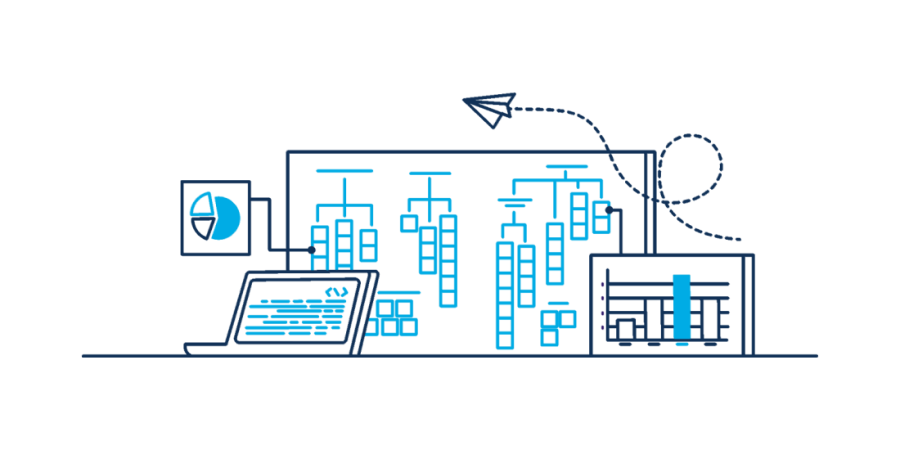 In this episode, we explore the fascinating intersection of sports and data analytics, uncovering how the NFL’s adoption of data-driven strategies can inform business decision-making. From fostering a culture of actionable insights to building machine learning models, we dive deep into G2M Insights’ use of their G2M platform to predict Super Bowl winners. Discover the challenges of modeling rare events, the importance of overcoming data biases, and how these techniques showcase the power of advanced analytics in both sports and business. Tune in for a behind-the-scenes look at predictive modeling and the lessons it offers for any competitive field.
In this episode, we explore the fascinating intersection of sports and data analytics, uncovering how the NFL’s adoption of data-driven strategies can inform business decision-making. From fostering a culture of actionable insights to building machine learning models, we dive deep into G2M Insights’ use of their G2M platform to predict Super Bowl winners. Discover the challenges of modeling rare events, the importance of overcoming data biases, and how these techniques showcase the power of advanced analytics in both sports and business. Tune in for a behind-the-scenes look at predictive modeling and the lessons it offers for any competitive field.

